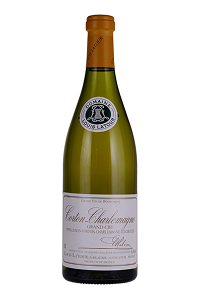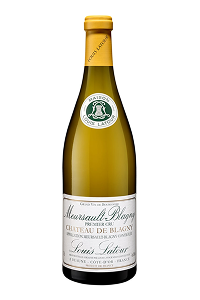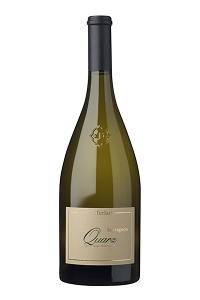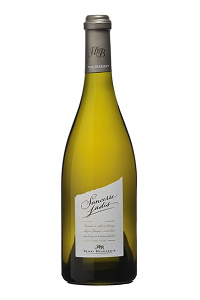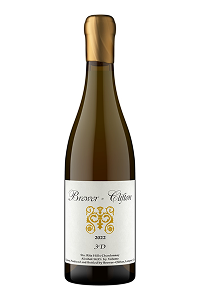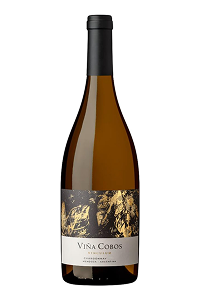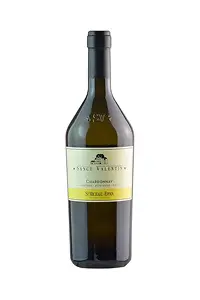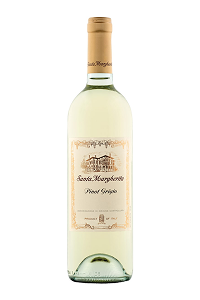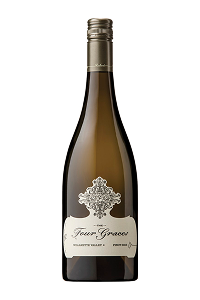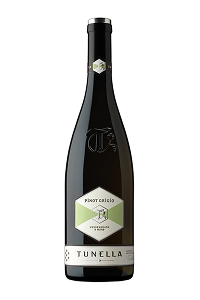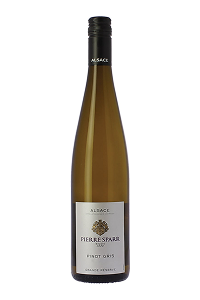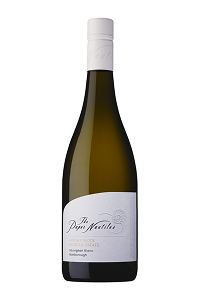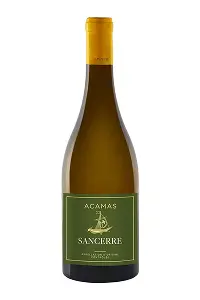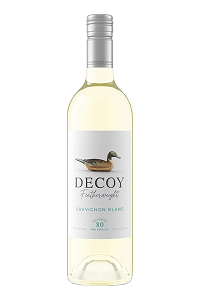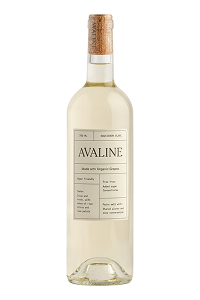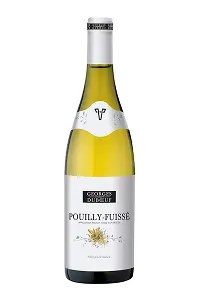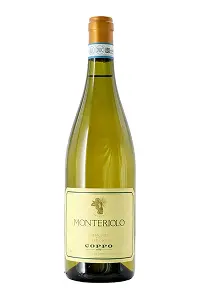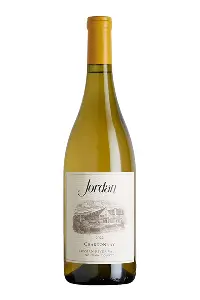Best white wine selections for 2025
White wines bring refreshment with their crisp and aromatic taste. In this guide we will explore the best white wine of 2025, highlighting exceptional bottles from celebrated wine regions, standout grape varieties and perfect food pairings.
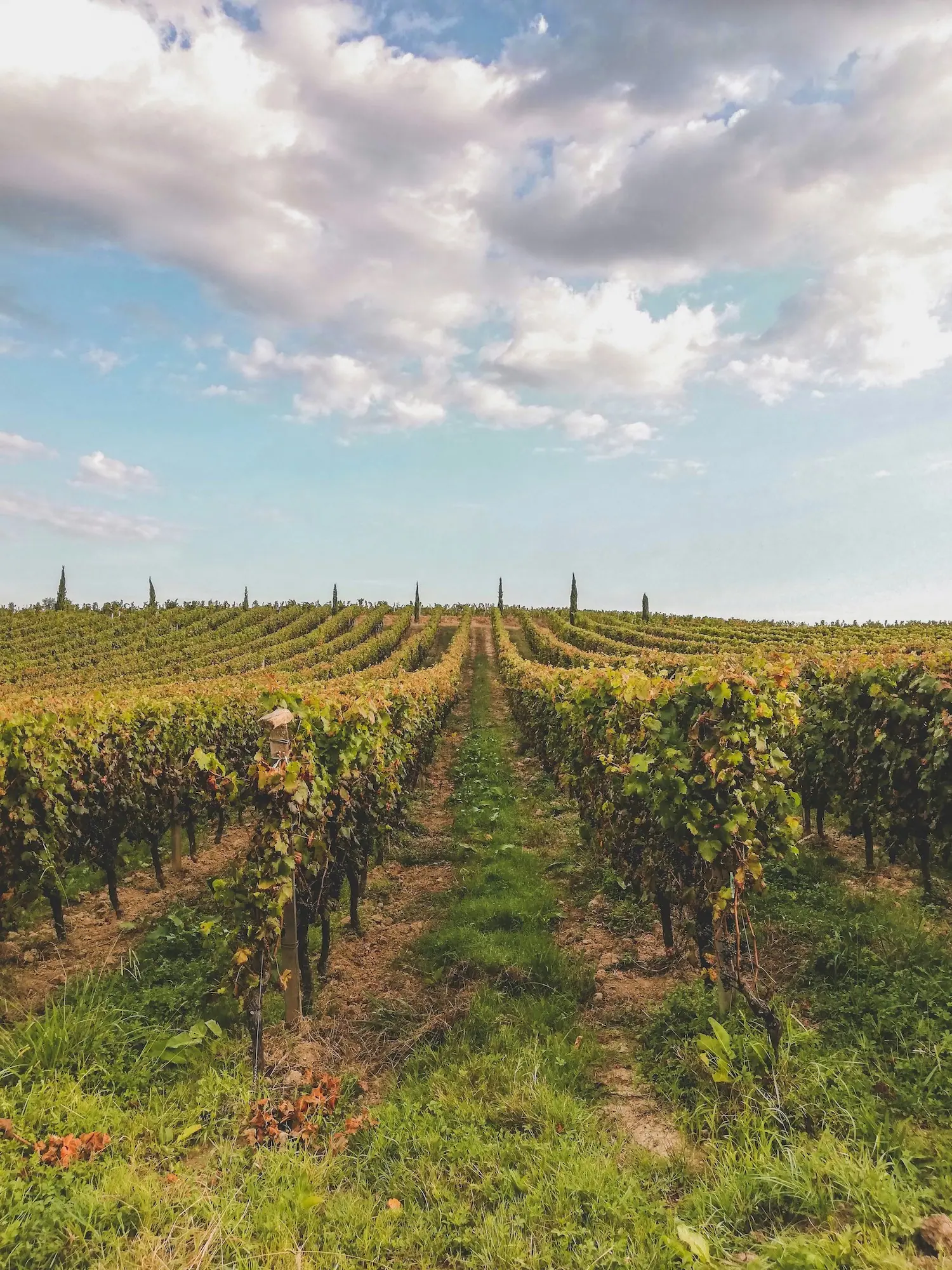
By
Last updated:
Table of Contents
Top 10 white wine bottles to try in 2025
Corton-Charlemagne Grand Cru 2019
France
Meursault-Blagny Château de Blagny Premier Cru – Louis Latour 2022
France
Collio Chardonnay Selezione – Borgo del Tiglio 2022
Italy
Quarz Sauvignon Blanc – Terlan 2022
Italy
Castello della Sala Cervaro – Marchesi Antinori 2022
Italy
Rochioli Vineyard Chardonnay – Ramey 2017
California
Leirana Finca Genoveva Albariño – Forjas del Salnes 2022
Spain
Sancerre Jadis – Henri Bourgeois 2020
France
3D Chardonnay – Brewer Clifton 2022
California
Vinculum Chardonnay – Vina Cobos 2022
Argentina
Sanct Valentin Chardonnay – St. Michael-Eppan 2019
Italy
What is white wine and how is it made?
The production process of white wine is typically very careful and divided into three key phases:
- Crushing: the grapes are gently pressed to extract the juice.
- Clarification: the juice is clarified to prevent the natural pigments from coloring the wine.
- Fermentation: usually done in stainless steel tanks to lock in crisp acidity and enhance freshness.
Some versions of dry white wines are fermented and aged in steel to preserve bright and zesty flavors while sweeter varieties are aged in oak barrels to enhance finish and complexity. Both the aging process and winemaking style play a crucial role in defining the wine’s final taste.
Among the best grape varieties used to produce white wine are:
Each grape brings unique aromas which may include citrus, green apple, floral tones or mineral nuances making every variety diverse and expressive.
When comparing red vs white wine, the main difference start in the production process:
- Red wine is made by fermenting grape juice together with the skins to extract colors, tannins and complex flavors.
- White wines are typically made from white grapes with the skins separated from the juice immediately after pressing. This early separation results in a lighter color and a fresher flavor profile.
Types of white wine: the role of body and sweetness
Different types of white wine correspond to a wide variety of styles each influenced by grape variety, acidity and region where they’re produced. However, three key elements amongst these influences stand out:
- Body: represents how heavy or light it feels on the palate.
- Sweetness: represents the level of residual sugar present in the wine which ranges from dry to sweet.
- Production style: including wine making methods and other factors such as aging or carbonation.
Together, these characteristics determine the wine’s overall flavor profile, its level of freshness and how well it pairs with different foods. Understanding how body, sweetness and production influence the different white wine types makes it easier to select the right wine for any occasion.
Light, medium or full: discovering white wine by body
In wine tasting, body refers to the weight and texture a wine creates on your palate. Just like red wines, the body of each white wine varietal is shaped by the grape variety, alcohol content, aging and other factors related to the production method.
White wines generally fall into three main body categories:
- Light bodied: crisp, fresh and delicate in texture.
- Medium bodied: well balanced with moderate alcohol and acidity.
- Full bodied: rich and complex often aged in oak for added depth.
Tip for beginners: if a white wine feels like dancing on your tongue, it’s likely light bodied; if it lingers and feels more rounded it’s probably medium or full bodied!
| Body Type | Top Producers | Grape Varieties | Structure & Flavor |
|---|---|---|---|
| Light-bodied | Rich, creamy texture with higher alcohol, flavors of tropical fruits, butter, vanilla, and spice | Pinot Grigio, Vermentino, Sauvignon Blanc | Crisp, fresh, delicate with high acidity and light fruit flavors (apple, citrus, pear) |
| Medium-bodied | Ken Forrester, Eroica, Bodegas Terras Gauda | Chenin Blanc, Riesling, Albariño | Balanced texture, moderate acidity, flavors of green apple, peach and floral notes |
| Full-bodied | Domaine William Fèvre, Franz Haas, Guigal | Chardonnay (oaked), Gewürztraminer, Viognier | Rich, rounder texture with higher alcohol, flavors of dry fruits, butter, vanilla and spice |
Light bodied white wine
Light bodied white wines usually have lower alcohol content, minimal tannins and crisp acidity. They tend to be fresh with vibrant flavors of citrus, green apple or melon. These wines pair well with light dishes such as salads, seafood or served on their own as a refreshing aperitif.
Medium bodied white wine
Medium bodied white wines offer a harmonious balance of texture, acidity and alcohol. They provide more depth and richness than lighter wines without being overly rich. These wines pair wonderfully with pasta, seafood, cheese and many other dishes.
Full bodied white wines
Full bodied white wines are rich, intense and often shaped by oak aging. Their higher alcohol content supports bold flavors of ripe fruit, spice and rounded texture. They pair perfectly with hearty dishes, aged cheese or creamy sauces while their depth also gives them strong aging potential.
3 Crisp white wines to try
Crisp white wines are known for their vibrant acidity, fresh fruit flavors, and refreshing, clean finish. With their zesty, light characteristics, they are perfect for warm weather, light dishes, and casual sipping.
Here are our top 3 crisp white wine recommendations:
- OKE Sauvignon Blanc by Te Pā Wines (New Zealand) — Zesty citrus and green apple.
- Jesera Pinot Grigio by Venica and Venica (Italy) — Crisp and light with pear and lime notes.
- Leirana Albariño by Forjas del Salnes (Spain) — Bright acidity and citrus zest.
Serving tips: these wines pair beautifully with goat cheese or a fresh herb salad. Serve well-chilled at around 46-50°F.
How to classify white wine by sweetness level
White wine can range from bone dry to lusciously sweet with varying levels determined by the amount of residual sugar left after fermentation. Here’s a look at the classification system used to describe white wine sweetness:
- Dry: crisp and clean on the palate taste minimal sweetness (common examples of dry white wine are Pinot Grigio and Chardonnay).
- Semi dry: retains a gentle hing of sweetness balanced by acidy and delicate fruit notes (examples include Chenin Blanc and Sauvignon Blanc).
- Off dry: slightly sweet with a noticeable fruity character (e.g. Riesling and Gewürztraminer).
- Sweet: pronounced sweetness often accompanied by rich ripe fruit flavors (e.g. Sauternes).
Here’s a look at white wine styles across the sweetness spectrum to enjoy at every stage of the scale.
| Sweetness | Top Pick | Common Varietals |
|---|---|---|
| Dry | Tramin Unterebner Pinot Grigio 2022 | Pinot Grigio, Chardonnay |
| Semi dry | Sauvignon Blanc by Cloudy Bay | Chenin Blanc, Sauvignon Blanc |
| Off dry | Gewürztraminer by Trimbach | Gewürztraminer, Riesling |
| Sweet | Moscato d’Asti by Vietti | Moscato, Sauternes |
Non alcoholic white wine
One of the most important innovations in the world of oenology is undoubtedly the development non alcoholic white wine. Thanks to reverse osmosis producers can separate the alcohol from the wine while preserving its original structure and aromas.
Spumante is regarded as the best non alcoholic white wine but there are other excellent options that will surprise you with their authentic taste. Here are some of our favorites:
- Prima Pave Blanc de Blancs: a refined, alcohol free sparkling white wine.
Food pairing suggestion: Sushi, roasted chicken or mild goat cheese. - Josef Leitz Eins Zwei Zero Chardonnay: a smooth and crisp non alcoholic Chardonnay.
Food pairing suggestion: light salads, grilled vegetables, seafood. - Giesen 0% Sauvignon Blanc (Non-Alcoholic): a fresh and vibrant non alcoholic Sauvignon Blanc.
Food pairing suggestion: fresh seafood, sushi or a goat cheese salad.
White wine food pairing tips to pair like a pro
Finding the perfect white wine food pairing can transform any meal into a memorable experience. White wines offer endless pairing possibilities due to their varied profiles ranging from crisp and zesty to rich and smooth.
In the table below, we’ll guide you through the ideal combinations to bring out the best in both your white wine and your meal.
| Food | White Wine / Grapes | Type & Structure |
|---|---|---|
| White Fish and Fat Fish | The FMC Chenn Blanc 2021 – Ken Forrester – Chenin Blanc | Medium bodied, fruity, off dry to dry |
| Raw Seafood and Shellfish | Cuvee Brut – Piper-Heidsieck – Champagne | Light bodied, fresh and juicy, dry |
| Light Chicken, DishesTurkey | Sonoma Coast Chardonnay2022 – La Crema – Chardonnay | Full bodied, creamy, lightly oaked |
| Light Cheese, Mozzarella, Burrata, Young Goat Cheese | Te Koko Sauvignon Blanc 2021 – Cloudy Bay – Sauvignon Blanc | Dry, zesty, medium bodied |
| Aged Cheese, Parmigiano Reggiano, Cheddar, Gouda | Gewürztraminer 2018 – Maison Trimbach – Gewürztraminer | Semi sweet, spicy, full bodied |
| Cured Meats & Cold Meats | Bevan Cellars Dry Stack Vineyard Sauvignon Blanc 2022 – Sauvignon Blanc | Dry, crisp, high acidity |
| Seafood, soft cheeses, pasta | Lagar de Cervera Albarino 2023 – Lagar de Fornelos – Albariño | Light bodied, fresh, citrusy |
| Steak, Gourmet Burgers | Sonoma Mountain Chardonnay 2023 – Kistler Vineyards – Chardonnay | Rich, full bodied oaky character |
California white wine and other wine regions in the USA
Although the United States is known for its red wines, white wine production is rapidly growing. California white wine is the leading category with Chardonnay accounting for 20% of white wine production in the USA.
The Napa Valley and Sonoma regions are famous for their rich and balanced whites offering both fruity expressions and fuller, buttery styles. Washington and New York’s Finger Lakes regions are also gaining recognition with fresh and mineral Rieslings. In recent years, many California wine makers have been crafting fresher unoaked Chardonnay, drawing inspiration from the refined Burgundy styles.
| Region | Top to Try | Characteristics |
|---|---|---|
| Napa Valley, CA | Chardonnay 2022 – Napa Cellars – Chardonnay | Balanced, medium acidity, full bodied |
| Sonoma County, CA | Late Harvest Sauvignon Blanc 2013 – Duckhorn Vineyards – Sauvignon Blanc | Light bodied, high acidity, crisp structure |
| Willamette Valley, OR | King Estate Willamette Valley Pinot Gris 2023 – King Estate – Pinot Grigio | Medium bodied, high acidity, fresh structure |
| Columbia Valley, WA | Board Track Racer The Vincent Chardonnay 2022 – Mark Ryan – Chardonnay | Full bodied, medium acidity, creamy structure |
| Finger Lakes, NY | Semi-Dry Riesling 2023 – Dr. Konstantin Frank – Riesling | Light bodied, high acidity, linear structure |
| Sonoma County, CA | Rodney Strong Alexander Valley Sauvignon Blanc 2023 – Rodney Strong Vineyards – Sauvignon Blanc | Medium bodied, high acidity, vibrant structure |
White wines from Italy from North to South
White wines from Italy often derive from indigenous grape varieties that define the country’s wine making identity. Each region offers its own expression of climate, soil and tradition resulting in a remarkable diversity. Let’s explore the most important ones:
- Alto Adige undoubtedly stands out as the most renowned region for its fresh elegant and aromatic whites.
- Lombardy stands out for its premium traditional method Franciacorta, fiercely competing with the best Champagne styles.
- Friuli-Venezia Giulia is celebrated for its refined and mineral driven white wines often featuring crisp acidity and delicate floral notes.
- Veneto delivers internationally acclaimed styles, including Prosecco from Glera grapes.
- Sardinia offers distinctive varietals like Vermentino bringing into the glass herbal aromas and a refreshing saline edge from its coastal vineyards.
- Sicily shines with its sun drenched white wines that are rich, expressive and infused with the warmth of the Mediterranean.
White wines from France: the fine technique behind every bottle
French wine makers undoubtedly take the top spot crafting the world’s finest white wines! France’s wine regions offer elegant, premium elegant whites with unique characteristics. Here are just a few examples:
- Burgundy: is the main home of elegant and complex Chardonnay.
- Champagne: stands apart with its prestigious sparkling wines crafted through the meticulous traditional method resulting in unmatched finesse and longevity.
- Loire Valley: it’s the Sancerre wine region, producing fresh mineral wines from Sauvignon Blanc grapes.
- Alsace: shines with aromatic grapes giving life to Riesling and Gewürztraminer.
- Bordeaux: is the region of complex whites like Sémillon and Sauvignon Blanc.
German white wine
Just like in the rest of Europe, German white wine is highly regarded for balance, freshness and impressive aging potential.
Here are three picks selected by our team of wine experts:
- Grünlack Riesling Spätlese by Schloss Johannisberg
- Riesling Trocken 2022 by Wittman Westehofener
- Kinheimer Hubertuslay Riesling Auslese 2018 by Markus Molitor
Spanish white wine
Spain is the third largest wine producer in Europe together with Italy and France. While red wine dominates in volume, Spanish white wine is widely recognized and appreciated for its freshness, acidity and bold character.
Among the most well known grape varieties are Albariño, Macabeo (Viura) and Garnacha Blanca.
We’ve selected three Spanish white wines you can enjoy on any occasion:
- Albariño 2022 by Pazo de Señorans
- Vina de Martin Os Pasas Blanco 2021 by Luis A. Rodriguez Vazquez
- Verdejo 2021 by Belondrade y Lurton
Exploring white wine varietals and white wine grapes
Choosing between different kinds of white wine with so many styles, labels and regions to choose comes down to getting familiar with the white wine grapes themselves!
A single grape can taste completely different depending on where it’s grown and the wine maker’s production method. Learning the main varieties helps you anticipate the flavors in your glass but also gives you confidence to explore new bottles with confidence.
Here are some of the white wine varietals used to produce the most popular white wines:
Pinot Grigio: the world’s favorite dry white
Italian Pinot Grigio is one of the most beloved white wines, known for its freshness and versatility. Although its roots lie in the Italian peninsula, it is now grown in wine regions around the world. A natural mutation of Pinot Noir, this variety is recognizable by its bluish gray skin and pairs beautifully with a wide range of dishes such as fresh seafood or light pasta.
Pinot Grigio 2023 – Santa Margherita (Italy)
Four Graces Pinot Gris 2022 – Four Grace (Oregon)
Pinot Grigio 2023 – Tunella (Italy)
Pinot Gris 2021 – Pierre Sparre (France)
Sauvignon Blanc: the perfect wine for sunny days
Sauvignon Blanc is a light, fresh and aromatic wine. Originally from the Loire Valley, it has found notable expressions in California and Australia. It is typically fermented in stainless steel to preserve its vibrant character.
Sauvignon Blanc wines should be enjoyed young to fully appreciate their bright aromatic qualities as they generally don’t improve with aging.
The Paper Sauvignon Blanc 2022 – Nautilus (New Zealand)
Sancerre Blanc 2022 – Acamas (France)
Sauvignon Blanc 2023 – Decoy (California)
Sauvignon Blanc – Avaline (France)
Chardonnay: the most popular white wine
Chardonnay is certainly the most popular white wine: served in almost every restaurant is widely appreciated for its incredible versatility. Chardonnay comes in different versions and price ranges, it can be expensive but also the most inexpensive white wine.
Curiosity: Chardonnay is often used as the base for Champagne, blended with Pinot Noir and Pinot Meunier. Together with Champagne, some of the world’s most celebrated sparkling white wines are primarily made from Chardonnay!
Chardonnay 2023 – Rombauer Vineyards (California)
Flavor: Ripe peach and melon interspersed with bright citrus notes
Body & structure: Full bodied, low tannins
Pouilly-Fuissé – Georges Dubœuf 2020 (France)
Flavor: White flowers, acacia honey, honeysuckle, and white fruits
Body & structure: Medium bodied, low tannins
Monteriolo Chardonnay 2022 – Coppo (Italy)
Flavor: Tropical fruits, vanilla, apple pie, caramel, and chamomile
Body & structure: Medium bodied, minimal tannins
Jordan Chardonnay 2022 – Jordan Vineyard & Winery (California)
Flavor: Juicy citrus, Honeycrisp apple and grapefruit, French oak
Body & structure: Full bodied, low tannins
Gewürztraminer: the most fragrant white wine
Gewürztraminer is a high quality white wine originally from Alsace, though it is cultivated also in other wine regions as Italy and France. Its name comes from the German word “Gewürz” meaning “spiced”, a fitting reference to its intensely aromatic profile marked by notes of lychee, rose petals and sweet spices.
If you’re looking for the best white wine to pair with cheese Gewürztraminer is a standout, especially alongside bold options like Gorgonzola or Roquefort.
| Gewürztraminer White Wine | Flavor | Body & Structure |
|---|---|---|
| Clos Gaensbroennel Gewürztraminer 2019 – Willm (France) | Floral notes (rose) and spices (pepper) | Medium bodied, low tannins |
| Gewürztraminer 2021- Cantina Terlan (Italy) | Rose, passion fruit and hints of other tropical fruit | Medium bodied, low tannins |
| Kolbenhof Gewürztraminer 2013 – J. Hofstätter | Ripe apricot and peach intermingled with exotic fruits | Full bodied, low tannins |
| Gewürztraminer Estate Vineyard – Gundlach Bundschu (California) | Fresh jasmine blossoms, lychee and Asian pears | Medium bodied, low tannins |
Iconic white wines: building a white wine collection
White wines are often seen as fresh and easy to drink but many are also true collector’s gems. Take Michel-Jack Chasseuil, one of the world’s most renowned collectors, whose cellar stores excellent white wine including legendary Château d’Yquem, whose 1811 rare vintage sold at auction for about $117’000, remaining one of the most expensive white wines ever sold.
But what makes certain white wines so irresistible to collectors? Let’s see some of the key factors:
- They come from historic vineyards in prestigious regions such as Burgundy and Alsace.
- Production is limited often with traditional and artisanal methods passed down for generations.
- They are made to age gracefully developing layers of depth and complexity over time.
Though red wines dominate the world of collectibles, certain whites like Burgundy Grand Crus or Rieslings can rival them in prestige and value.
Mastering white wine serving temperature
You don’t need to be a sommelier to enjoy a bottle at its best. Mastering white wine serving temperature is the simplest yet most effective way to enhance its flavor, aroma and texture. Along with temperature other elements like acidity, alcohol level (ABV) and aging potential play a key role in how a wine tastes and feels.
Understanding these elements makes it easier to pick a good white wine that suits your preferences and the occasion. In the chart below, we’ll explore optimal serving temperatures for different white wine styles and share practical advice to help you enjoy a glass at its fullest.
| White Wine Bottle | ABV | Tannin / Acidity | Aging Potential | Serving Temp |
|---|---|---|---|---|
| Terlan Pinot Grigio 2018 – Cantina Terlan | 13,5% | High acidity | 8-10 years | 46–50°F |
| Santa Cruz Mountain Chardonnay 2016 – Sarah’s Vineyard | 13,8% | Balanced acidity | Up to 10 years | 50–55°F |
| Trimbach Riesling – Maison Trimbach | 12,5% | High acidity | Over 15 years | 46–50°F |
| Flor de Muga Blanco 2018 – Bodegas Muga | 13,5% | Medium-high acidity | Up to 10 years | 50–54°F |
| Sylvaner Lutzeltal 2018 – Agathe Bursin | 12,5% | High acidity | Up to 5 years | 46–50°F |
| Dry Riesling 2019 – Chateau Ste.Michelle | 12,5% | High acidity | 5 – 8 years | 46–50°F |
How to store white wine?
A bottle of white wine can stand the test of time only if properly stored; in fact, only well preserved bottles ensure that the quality and character of a wine develops properly over time.
Here are some simple but effective tips on how to store white wine and preserve your bottle after opening ensuring it ’s integrity and quality:
- Keep it cool: store white wine at a consistent 46–54°F.
- Lay it flat: storing bottles horizontally helps keep the cork moist.
- Control humidity: a relative humidity of 80-85% creates optimal conditions.
- Avoid disturbances: protect wine from light exposure, kitchen heat and vibrations.
How to choose the best white wine for beginners
If you are a beginner, choosing a good bottle can be intimidating but with a few practical tips the task becomes easy and pleasurable! We have selected some approachable choices of white wines for beginners that make an ideal introduction to the rich world of whites:
- Chardonnay
Body: full-bodied, rich with buttery texture.
Best for: creamy pasta, lobster or chicken. - Pinot Grigio
Body: light, refreshing, with crisp acidity.
Best for: light salads, seafood or antipasti. - Prosecco
Body: light, bubbly, with bright green apple flavors.
Best for: appetizers, seafood or celebrations.
Start with one of these three wines and you can’t go wrong! To find other excellent white wines that suit your taste simply follow these easy steps:
- For light and smooth go with Pinot Grigio; for a fuller experience try Chardonnay.
- Sweetness preference: for a touch of sweetness Gewürztraminer is an excellent choice; for dry options choose Albariño or Chablis.
- For casual meals go with Pinot Grigio or Vermentino. For special dinners or seafood pairings Sancerre or Bourgogne Blanc are perfect.
- Crisp whites like Sauvignon Blanc go well with salads or seafood, while Chardonnay or Fiano complement creamy pastas and grilled chicken.
Scoring excellence: how white wines are rated
Jancis Robinson and Robert Parker are two of the most influential voices in the wine world, yet their approaches differ notably. Robinson uses a 20 point scale and places strong emphasis on a wine’s future evolution, while Parker’s 100 point system favors boldness and immediate appeal.
Despite these differences both go far beyond taste in their evaluations. White wines are judged through a combination of:
- Aroma: is the range and definition of scents that a wine presents, may include floral blossoms, ripe fruits, tropical tones or subtle mineral accents .
- Color: is the visual clarity, brightness and hue of the wine, reflecting purity and precise vinification.
- Structure: is the wine’s presence in the mouth, how it moves and lingers on the palate.
- Balance: is the harmony between acidity, alcohol, sweetness and body.
- Aging potential: is the wine’s capacity to gain complexity, depth and elegance over time.
The highest rated white wines are those in which these qualities come together to express a distinct sense of place. Coastal breezes, mountain elevations and centuries of winemaking tradition all constitute a wine’s terroir and shape what ends up in your glass!
Terroir is the interplay of natural elements and human touch that gives each bottle its identity.
FAQs Best white wine
What white wine is considered the best?
Chardonnay wine is often hailed as one of the best white wines due to its incredible versatility. It thrives in diverse climates and responds beautifully to different winemaking techniques, producing styles that range from crisp and light to rich and full bodied. This versatility has secured Chardonnay a place amongst the most celebrated wines in the world.
What are the 5 famous white wines?
Some of the most popular white wines, like Chardonnay, Sauvignon Blanc and Pinot Grigio, are celebrated for their refreshing dryness and food friendly nature. For those drawn to sweeter expressions, Riesling and Muscat Blanc stand out with their floral aromas and natural sweetness. This diversity makes white wine a versatile choice for every taste and moment.
Does white wine expire?
If you’re wondering “does white wine go bad?” the answer is yes, especially once the bottle is opened. Unopened white wine can last for 1 to 3 years (or longer for premium varieties) but once opened, it typically stays fresh for only 3 to 5 days. After that, exposure to air leads to oxidation dulling the flavors and aromas.
Do white wines contain sulfites?
Yes, sulfites are naturally present in white wines due to fermentation and many winemakers also add small amounts to maintain freshness and prevent oxidation. These compounds help preserve the wine’s flavor and stability. If you’re sensitive to sulfites seek out bottles labeled “low sulfite” or “no added sulfites” for a gentler alternative.
Is drinking white wine healthy?
In moderation, drinking white wine can have some health benefits. It contains antioxidants, which may help improve heart health. Research suggests moderate consumption can lower the risk of heart disease. However, excessive alcohol consumption can lead to negative health effects so it’s important to drink responsibly.
How long does white wine last in the fridge?
An opened bottle of white wine can last 3 to 5 days in the fridge, depending on the type of wine and how well it’s sealed. To keep it fresh, use a wine stopper or vacuum sealed cork. Be sure to refrigerate even red wines that are lighter in style to extend freshness.
What is a full bodied white wine?
Full bodied white wines are styles that are rich, creamy and have a deeper flavor profile. They tend to have a higher alcohol content and often feature oaked flavors. Wines like oaked Chardonnay or Viognier are great examples offering a luxurious mouthfeel and a more complex taste that stands up to hearty dishes.
What is a medium bodied white wine?
Medium bodied white wines strike a harmonious middle ground. They’re richer than light wines but without the weight of full bodied options. They deliver a smooth, rounded texture with moderate alcohol and layered flavors. Varieties like Chenin Blanc and Albariño showcase bright acidity, subtle fruit and gentle complexity, making them versatile for food pairings and easy sipping.
What does light bodied white wine mean?
Light bodied white wines provide smooth texture, moderate alcohol and bright acidity. Varieties like Chardonnay and Pinot Grigio bring subtle fruit flavors and gentle complexity, making them ideal for warm weather or casual occasions.
How many calories are in a glass of white wine?
A 5 ounce glass of white wine usually contains between 120 and 130 calories. The exact number can vary based on the wine’s sweetness and alcohol level. Dry wines tend to have fewer calories while sweeter varieties such as Moscato or Riesling can have more due to the added sugar content.
What does white wine taste like?
White wine presents a diverse spectrum of flavors based on the variety. It can range from light and dry with hints of citrus, green apple or floral notes to rich and full bodied with buttery, oaky or tropical fruit undertones. Its flavor profile is shaped by factors like grape variety, region and winemaking techniques.
How much sugar is in white wine?
White wine usually has between 0 and 3 grams of sugar per glass for dry varieties, depending on the specific style. Sweeter wines such as Moscato or Riesling can contain more, sometimes surpassing 5 grams per glass. The sugar content is influenced by the fermentation process with dry wines having the lowest levels.
